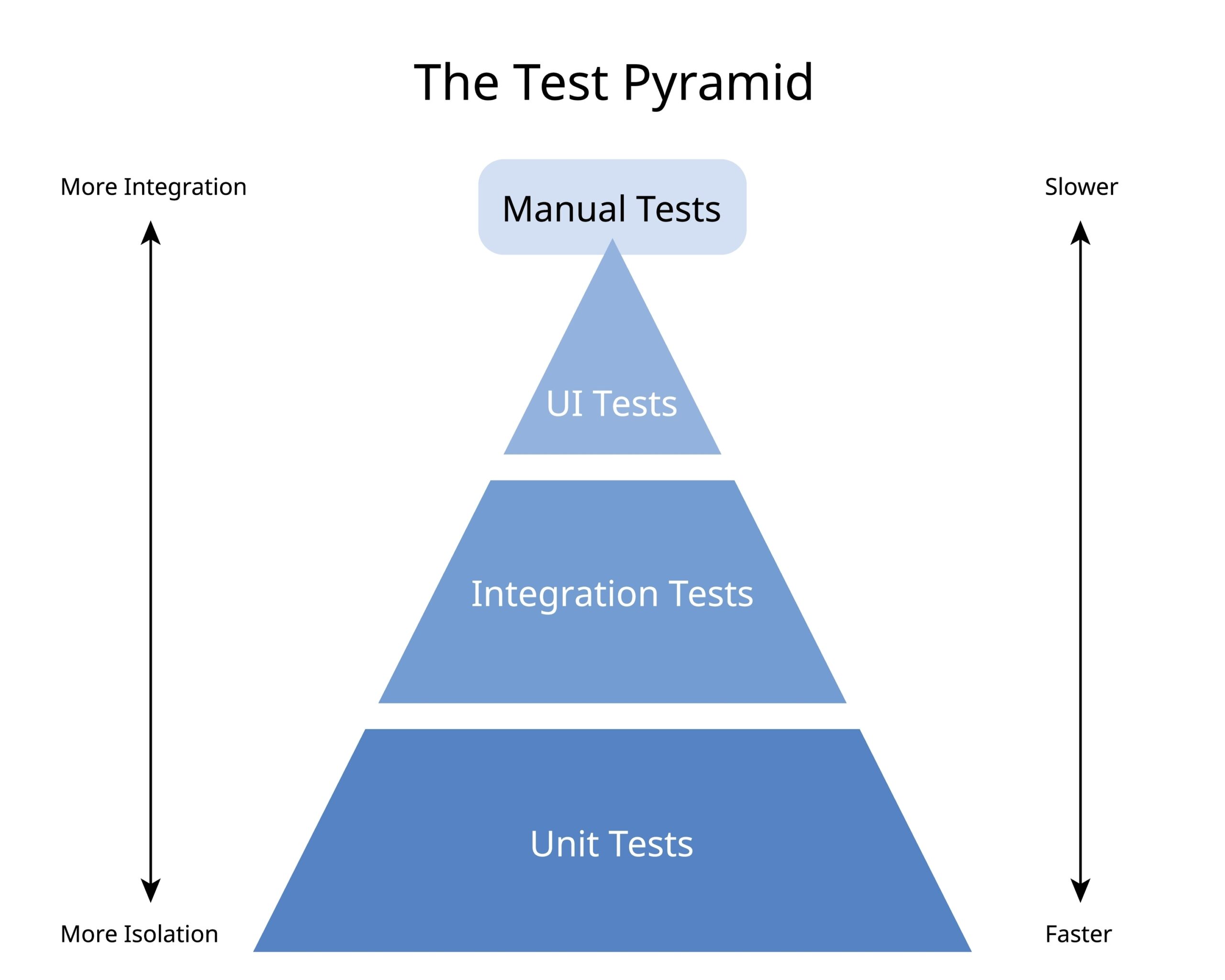There are some intricacies of modern software testing to find out. That's why we discuss the Agile Testing Pyramid and its transformative impact on Agile and DevOps methodologies.
More...
The Agile Testing Pyramid is more than just a framework in modern software testing paradigms; it's the embodiment of contemporary Agile and DevOps methodologies.
What is the Agile Testing Pyramid?
At its core, the Agile Testing Pyramid provides a visualization of different test types in Agile environments. Inspired by concepts like Shift-Left Testing and Agile tools' dynamic integration, this software testing pyramid showcases testing's hierarchical nature.
There are some intricacies of modern software testing to find out. That's why we discuss the Agile Testing Pyramid and its transformative impact on Agile and DevOps methodologies.
Base - Unit Tests
The automation pyramid's bedrock. These tests are quick, often part of the test automation pyramid, and target individual functions or classes. Their frequent execution ensures the codebase remains error-free even after modifications. The foundation of unit tests often adheres to Test Driven Development (TDD) principles, ensuring that each individual function or class not only meets its specification but is also robust and easily maintainable.
Middle - Service or Integration Tests
These tests scrutinize the interactions between varying software components, ensuring a glitch-free, integrated experience.
Apex - UI/End-to-End Tests
Simulating genuine user behaviors, these tests evaluate the application's overall performance. However, their exhaustive nature makes them slower and less frequent.
Historical Context and Evolution of the Testing Pyramid
Mike Cohn, the mastermind behind the Scrum Alliance, initially proposed the Agile Testing Pyramid. This idea was a pivot from the traditional Software Development Life Cycle (SDLC) testing approach, emphasizing the value of early feedback, perfectly encapsulated by Shift-Left Testing.

Who Can Benefit From The Agile Testing Pyramid?
IT experts and developers ranging from software developers, QA engineers, project managers, to DevOps specialists can greatly benefit from understanding and utilizing the Agile Test Automation Pyramid. This is especially important for:
- 1Agile and DevOps Teams: These teams aim to deliver new features with quality sustainably. Traditional testing methodologies often don't align with the fast-paced Agile or DevOps framework, making the Testing Pyramid a crucial tool for these teams.
- 2QA Engineers and Developers: As the traditional Waterfall model often segregates developers and QA teams, the pyramid test promotes collaboration between these roles. At Atlassian, for instance, it's common practice for developers to pair with QA team members in exploratory testing, enhancing software quality and efficiency.
- 3Project Owners and Managers: Understanding the testing pyramid allows project owners to balance between delaying a release and skimping on testing, thus avoiding the pitfalls of the Waterfall method.
Where Can You Get These IT Experts?
Dive into the next phase of software testing excellence with us! We provide you top-tier tech talents tailored to your needs to boost your project's success. The benefits?
Which IT Projects Is This Important For?
Diving Deeper: Layers of Importance
Unit Tests: More than just function or class tests, unit tests validate a single code "unit", ensuring output consistency even after code refactoring.
Integration Tests and Service Layer/API Tests: Crucial during early application development phases, these tests often precede UI setup.
End-to-End (E2E) and UI Tests: While critical for authentic user interaction validation, their broad scope makes consistent automation challenging.
Test Ice Cream Cone & Other Alternatives
It's worth noting that while the Testing Pyramid is widely recognized, some critics highlight its limitations. Alternatives like the Test Ice Cream Cone emphasize the pitfalls of excessive UI testing and scarce unit testing. Meanwhile, the Honeycomb and Testing Trophy models address these concerns, focusing on a balanced testing strategy for modern web applications. Such models push for a combination of unit tests, integration tests, and static type checks, bolstered by fewer E2E tests.
Significance in the Agile World
The Agile Testing Pyramid mirrors the Agile Manifesto values. Perfectly aligning with Agile and DevOps, the pyramid fosters rapid code refactoring, frequent releases, and minimizes manual testing reliance.
Benefits of the Agile Testing Pyramid:
Future Scope & Implications
The Agile Testing Pyramid is versatile. Teams can adapt it, for instance, by integrating unit tests for UI. Such adaptability not only ensures faster application launches but also nurtures team collaboration throughout software development.
